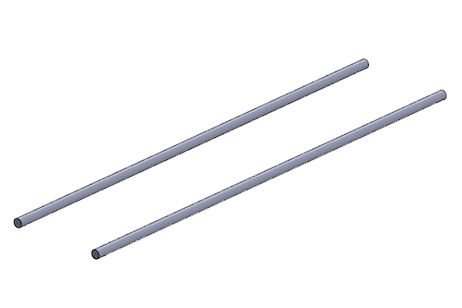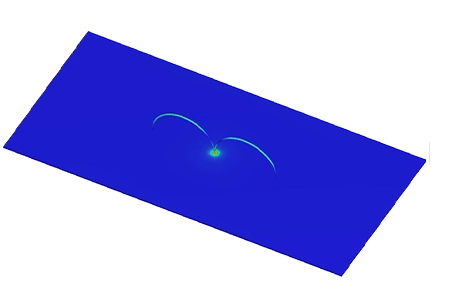Transforming OSA Treatment: The Power of RF Microwave Ablation
RF Microwave Ablation
This application note introduces a minimally invasive solution for treating snoring and Obstructive Sleep Apnea (OSA) through Radio-frequency (RF) Microwave ablation. Utilizing an electromagnetic Open-tip applicator, this technique rapidly heats and coagulates tissue, reducing size and preventing airway blockage during sleep. Highlighting minimal postoperative pain and quick recovery, the note also discusses the role of Finite Element Method (FEM) simulation in optimizing treatment by estimating power, time, and temperature distributions. This approach offers a promising treatment for OSA, enhancing patient outcomes with precise simulation-assisted design.
![Illustration of the breathing operation (a-without and (b-with the OSA.[1] (c- Insertion of microwave antenna into soft palate region](/ckfinder/userfiles/images/Illustration-of-the-breathing-operation-%28a-without-and-%28b-with-the-OSA.%5B1%5D-%28c-Insertion-of-microwave-antenna-into-soft-palate-region.jpg)
Simulation Setup
The applicator design, a Coaxial antenna with a curved tip, is tailored to fit the human mouth's anatomy and specifically address the upper soft palate's curvature. This innovation enhances RF Microwave ablation treatment for snoring and OSA, ensuring precise targeting and effectiveness. Figure 2 displays the design, with Table 1 listing its detailed dimensions, emphasizing its anatomical compatibility and clinical utility.
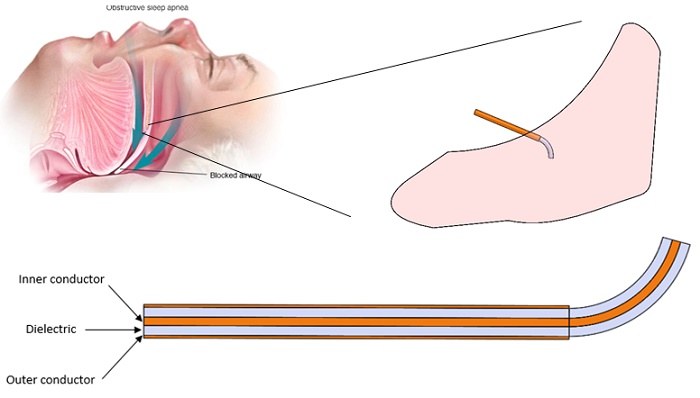
| Part | Dimension (mm) |
| Diameter of inner conductor | 0.912 |
| Diameter of outer conductor | 2.985 |
| Diameter of dielectric | 3.581 |
| Length of antenna | 45 |
| Length of opened tip | 15 |
| Bending angle (degree) | 75° |
The HFWorks Antenna solver, combined with thermal analysis at 2.45 GHz, assesses the antenna's electromagnetic and thermal performance for RF Microwave ablation. Material properties critical for accurate simulation are detailed in Table 2, ensuring the antenna is optimized for treating snoring and OSA effectively and safely.
| Material | Relative permittivity | Dielectric loss tangent | Electrical conductivity (S/m) | Thermal conductivity (W/m. K) |
| Copper | 1 | 0 | 5.96E+7 | 401 |
| Soft palate tissue | 53.573 | 0 | 0.0125 | 0.5 |
| Solid PTFE | 2.03 | 0 | 0 | 0.4 |
Electromagnetic boundary conditions
- Wave port: The wave port boundary is applied to the dielectric input face of the coaxial antenna.

- Radiation: The Radiation boundary condition is used to truncate the open computation domain when analyzing antenna problems. In our case, it is applied to the outer faces of the studied tissue.
Thermal boundary conditions
- For an excitation power of applied to the input port at 2.45 GHz, a thermal boundary convection is applied to the outer faces of the Tissue part at the normal body temperature of 37°C and a convection coefficient set to
.
- Another BC temperature is applied to the outer faces of the outer conductor with a value set to 37°C.
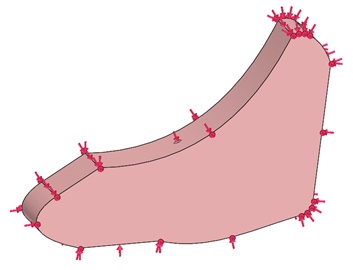
Mesh
In HFWorks, fine mesh control optimizes simulation accuracy by adjusting element sizes, especially applied to the antenna body for precise electromagnetic and thermal analysis, as shown in the meshed model figure.
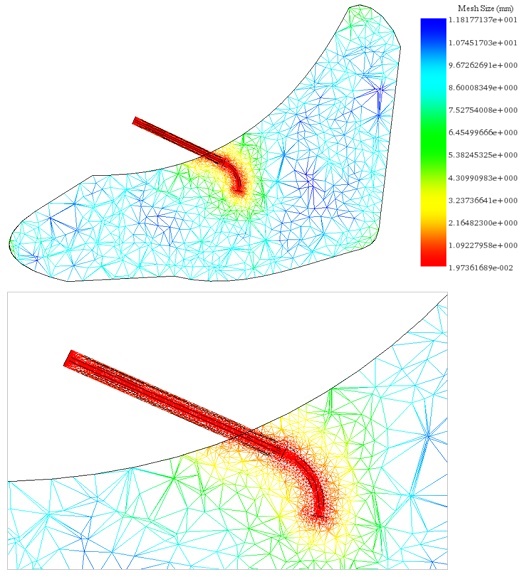
Results
HFWorks features a comprehensive thermal solver designed to assess the thermal impact of high-frequency designs, accounting for both conductor and dielectric losses under various power excitation scenarios. In the context of the microwave ablation process being studied, an excitation power of \(P_{in} = 50W\) was applied to heat the soft palate tissue. The simulation, conducted at a frequency of 2.45 GHz, yielded the following results:
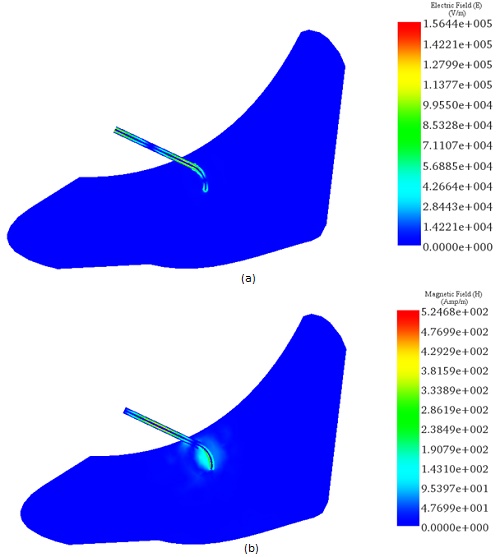
The integrated thermal analysis of the antenna at 2.45 GHz shows the temperature distribution in soft tissue, with peak temperatures of 54°C near the open-tip antenna, as illustrated in Figure 6. This data aids in identifying the coagulated tissue zones.
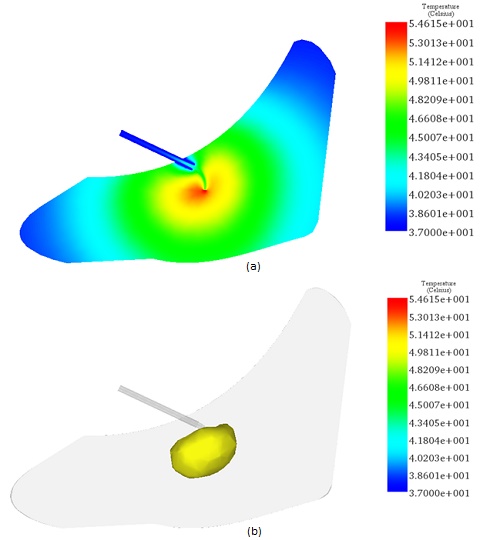
Figure 8 displays the heat flux density, highlighting maximum distribution along the antenna applicator's inner conductor.
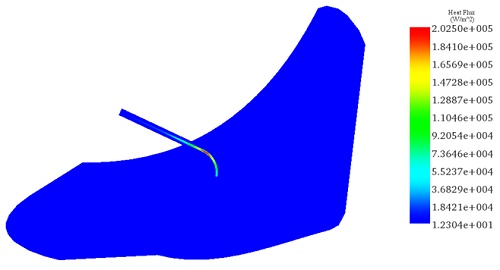
Conclusion
The application note explores the use of Radio-frequency (RF) Microwave ablation as a minimally invasive solution for treating snoring and Obstructive Sleep Apnea (OSA). This innovative technique employs an Open-tip coaxial antenna applicator, designed to fit the human mouth's anatomy and specifically address the upper soft palate's curvature, thereby enhancing treatment precision for OSA. By rapidly heating and coagulating tissue, RF Microwave ablation effectively reduces tissue size, preventing airway blockage during sleep with minimal postoperative pain and quick recovery. Finite Element Method (FEM) simulation plays a crucial role in this process, enabling optimization by estimating power, time, and temperature distributions to ensure targeted and safe treatment. The application note demonstrates the potential of RF Microwave ablation in improving patient outcomes through precise, simulation-assisted antenna design, offering a promising treatment alternative for patients suffering from OSA.
References
[1]. http://smileworksmeridian.com/treatments/sleep-apnea/
[2]. Jakawanchaisri, Wirote, et al. "FEM Analysis of Microwave Ablation for Snoring Therapy by Using Real Image." Proc ICBET 2012 (2012).


